Unfortunately, plant diseases that occur early in the growing season can be difficult to diagnose. At this stage the focus is typically on issues affecting seed germination, emergence, stand establishment, and general crop appearance. Plant diseases such as seed rots, damping off, wirestem, and seedling blights are the main diseases that can be associated with early season issues. It is important to recognize that these common names may be used interchangeably and often describe any symptom from seed decay to seedling death. It may be useful to think of early season disease issues in terms of the seedling disease complex, which consists of seed rot (various agents) damping off (Pythium spp.), seedling blight (Rhizoctonia solani and Fusarium spp.), and wirestem (Rhizoctonia solani). Symptoms caused by these diseases can be similar and it is difficult to identify causal pathogens in field; this necessitates the need for timely collection of plant samples and assessment by a diagnostic laboratory.
Impacts of early season plant disease issues:
- Reduced seed germination, poor emergence, and non-uniform/unthrifty stand establishment;
- Poor stands can make it more difficult for the crop to compete with weeds;
- Herbicide performance may suffer due to reduced crop competition and because significant weed populations develop there may be an increased risk of herbicide resistance;
- Non-uniform crop development can make it challenging to schedule subsequent herbicide, fungicide and insecticide applications, especially where they are growth stage dependent;
- Uneven crop development can also complicate harvesting operations later in the season when several growth stages are present;
- Overall crop performance and yield are directly or indirectly compromised.
General descriptions of early season plant disease issues aka the seedling disease complex:
- Seed rots;
- Seed doesn’t germinate, with subsequent softening and disintegration of seed and discolouration (e.g. blackish or brownish);
- Can result from pathogens (e.g. Pythium spp.) or saprophytic or opportunistic fungi and bacteria;
- Note the seed may already be dead due to factors related to previous harvest conditions and subsequent grain handling;
- Seedling blight;
- General and rapid killing of the entire seedling or particular tissues (e.g. roots);
- Can be before (pre-) or after emergence (post-);
- Damping off;
- Destruction of seedlings close to soil surface;
- Seedlings topple over at soil line;
- May have slimy, blackish, rotted appearance;
- Causes decay or watery rot of fine feeder roots;
- Sudden wilting and death before or after emergence;
- Plant killed prior to emergence versus after;
- Pre- vs. post-emergence damping off.
- Destruction of seedlings close to soil surface;
- Wirestem (mainly in canola);
- Symptoms first appear water-soaked;
- Develop into sunken reddish-brown lesions;
- Infections typically remain firm and “dry”;
- More of a “pinching off” along the hypocotyl;
- May extend up to the cotyledons and down to the roots;
- Symptoms first appear water-soaked;
- Root rots;
- Softening, discolouration, and disintegration of root tissues;
- Early season issues can result in poor stand establishment;
- Mid to late season root rot issues;
- Early infections can then be followed by progression of root rot pathogens on root and crown tissues;
- The impact on yield is exacerbated by dry conditions during the grain filling period;
- Remaining healthy root tissues (if present) are unable to keep up with water and nutrient demands.
Key risk factors for seed and seedling diseases include:
- Tight or non-existent rotations, which facilitate the build up of infected crop residues and soil-borne survival structures;
- The host range of some pathogens can be quite wide depending on crop species. For example, various Fusarium spp. may attack a range of pulse crops as well as canola, while Fusarium graminearum is a concern for various cereal crops;
- Deep seeding prolongs exposure to soil-borne pathogens, while also resulting in stressed seedlings that may increase risk;
- Seed-borne pathogens are a key concern early in the season with cereal pathogens such as Fusarium graminearum and the spot blotch pathogen, Cochliobolus sativus being particularly damaging at moderate to high infection levels (e.g. well over 10% seed infection);
- Other seed-borne issues may result in a source of disease affecting crop productivity and grain quality later on in the season;
- The cereal smuts and bunts are classical examples of this, while net-form net blotch seed infection in barley can result in leaf infections and a source of inoculum for the remainder of the season;
- Nutrient imbalances may cause issues, such as browning root rot in barley due to Pythium spp., which is exacerbated by phosphorus deficiency. Fortunately, routine use of phosphorus fertilizers has reduced the risk over the last 50-75 years;
- Prolonged exposure to wet soil conditions with moderate temperatures. Cooler temperatures are often blamed for an increased risk of seed and seedling diseases, but the optimal temperature range for many seed and seedling pathogens is 15-25oC;
- Note cool dry conditions may increase the risk of dry seed rot in cereals caused by Penicillium and Aspergillus spp.;
- Damaged or highly weathered seed can increase the risk of seed rot and damping off;
- Cracking of the seed coat due to mechanical damage can directly compromise seed embryo viability or as the seed takes on water it may leak sugars that attract pathogens;
- Weathering of plants around harvest or storage issues may lead to poor seed and seedling vigour which can slow germination and emergence, thus increasing risk.
When scouting for early season seed and seedling disease issues, symptoms may be scattered throughout the field or may be associated with field knolls or depressions. With suspected issues it is very important to dig the seed and seedlings up and look at below-ground plant tissues. Above-ground plant symptoms can be similar to other issues related to soil nutrient deficiencies, water-logged soils, herbicide residues and even insect damage. Saprophytic microorganisms or opportunistic pathogens will often colonize insect- or abiotic stress damaged tissues resulting in brownish-blackish discolouration of below-ground seedling tissues. Don’t wait too long to scout as secondary infections by saprophytes or opportunistic pathogens may mask the real cause of emergence and stand establishment issues.
Stand establishment issues can also be related to:
- Poor seed quality due to mechanical damage during harvest and grain handling/storage or excessive weathering of the crop prior to harvest. Note this may be the primary reason for problems, while weak/opportunistic plant pathogens may take advantage of these non-disease related issues;
- Herbicide residue issues, or for some crops (e.g. pulses) preharvest glyphosate application, especially when applied too early;
- Deep seeding;
- Poor seedbed preparation, seeder/opener issues and lumpy soil resulting in poor seed to soil contact;
- Excessively dry soil conditions, especially under conventional tillage;
- Too much seed-placed fertilizer or poor separation of seed and fertilizer at the time of seeding;
- Insect damage;
- Pinching off of stems at the soil surface may be caused by other factors;
- High winds;
- Heat canker;
- Frost canker.
Management of early season seed and seedling issues:`
- Try to use rotations of at least two years between host crops to reduce the build up of infected crop residues and soil-borne survival structures;
- Watch out for seed and seedling disease issues where the causal agent attacks a range of crop species;
- For example, various Fusarium spp. may attack a range of pulse crops as well as canola, while Fusarium graminearum is a concern for various cereal crops;
- Monitor seed quality and use seed with high germination and vigour and no to low levels of seed-borne pathogens;
- Be mindful that combine settings and weather conditions may affect seed quality;
- Low seed moisture at harvest together with increased combine cylinder and wind speed can increase the risk of mechanical damage;
- Grain handling/conveying equipment may be a factor; for some crop types, e.g. pulses, it is recommended to use a belt-type versus screw-type auger;
- Excessive post harvest processing of grain can damage seed, e.g. hulless barley and removal of hulls;
- Dry seed and increased wind speed with larger seeders may increase mechanical damage and decrease seed germination and vigour, especially in pulses;
- Avoid seed with elevated levels of seed-borne pathogens;
- Seed-borne Fusarium graminearum and the spot blotch pathogen Cochliobolus sativus are particularly aggressive on cereals;
- Seed-to-seedling transmission of some pathogens can result in a source of disease during subsequent crop development;
- E.g. cereal smuts and bunts, net-form net blotch and spot blotch in barley, and the mycosphaerella/ascochyta complex in pulses;
- Delaying seeding until soil temperatures are warmer (15-25oC) may increase the risk for some pathogen species, e.g. Fusarium graminearum;
- Be mindful that combine settings and weather conditions may affect seed quality;
- Seed treatments can help to limit risk from seed- and soil-borne pathogens;
- Use good application technology to ensure even seed coverage and choose seed treatments that are effective against the disease(s) you are dealing with;
- Consider a small test of seed germination and emergence in soil collected from the field(s) in which you plan to plant a given crop;
- Use treated and untreated seed from the same lot, in the same soil;
- Note seed testing companies may also provide testing of treated and untreated seed and may actually do the treating of the seed you send in and with the treatment of your choice;
- Seed treatments may not compensate for very high levels of seed-borne disease and it may be beneficial to look at a different seed lot;
- Seed treatments may be of limited benefit if seed germination and vigour problems are due to non-disease issues;
- Seed shallow if moisture conditions permit and ensure balanced soil fertility levels, limit seed-placed fertilizer, especially for nitrogen, and ensure good seed and fertilizer separation at the time of seeding;
- Preharvest application of products like glyphosate may comprise subsequent seed germination and vigour, especially for pulses when applied too early.
A few key links to aid in the management to seed and seedling diseases include:
Saskatchewan Ministry of Agriculture:
1. Put your best crop forward by knowing your seed-borne disease risk. (M. Hladun; released March 2024; URL retrieved 2024 May 29).
2. Seed quality and seed-borne diseases of cereal crops. (URL retrieved 2024 May 29).
Saskatchewan Pulse Growers:
3. Link opens sub-directory then search key word of “seeding” (URL retrieved 2024 May 31).
Canola Council of Canada:
4. Seedling disease management to improve canola plant establishment. (Canola Research Hub; released May 13, 2022; URL retrieved 2024 May 29).
5. Seedling disease complex. (Canola Encyclopedia; released 2020; URL retrieved 2024 May 29).
Manitoba Crop Alliance:
6. Seed treatments in wheat, barley and flax: What they are, how they work and when they should be used. (URL retrieved 2024 May 29).
Manitoba Pulse and Soybean Growers:
7. Minimizing air seeder damage to field peas. (Laura Schmidt, released 2022; URL retrieved 2024 May 29).
8. Soybean seed treatments: Assessing your risk. (No author cited; Updated 2022; URL retrieved 2024 May 29).
Crop Protection Network:
9. An overview of soybean seedling diseases. (published 2020Mar01; doi.org/10.31274/cpn-20190620-023; URL retrieved 2024 May 29).
10. Scouting for soybean seed diseases. (published 2016Nov07; doi.org/10.31274/cpn-20190620-018; URL retrieved 2024 May 29).
Montana State University:
11. Small grain seed treatment guide. (A. Dryer, J. Johnston, C. Tharp, U. Mckelvy, T., Lane, J. Fullbright, J. Rupp; updated May 2022; URL retrieved 2024 May 29).
Agriculture and Horticulture Development Board AHDB (note this is a UK site, but some concepts and recommendations are relevant for Prairie cereal crops):
12. Seedborne diseases of cereals: Tests and thresholds. (No author cited; Publication date not available; URL retrieved 2024May29).
Examples of disease related seed and seedling issues:
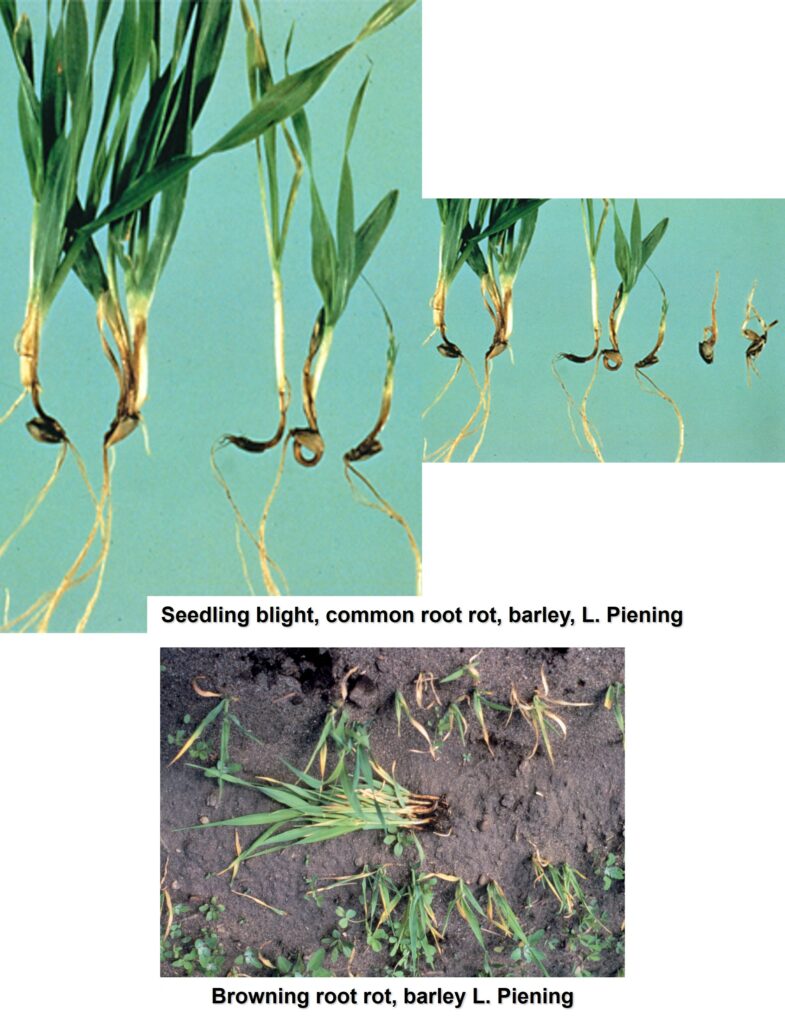
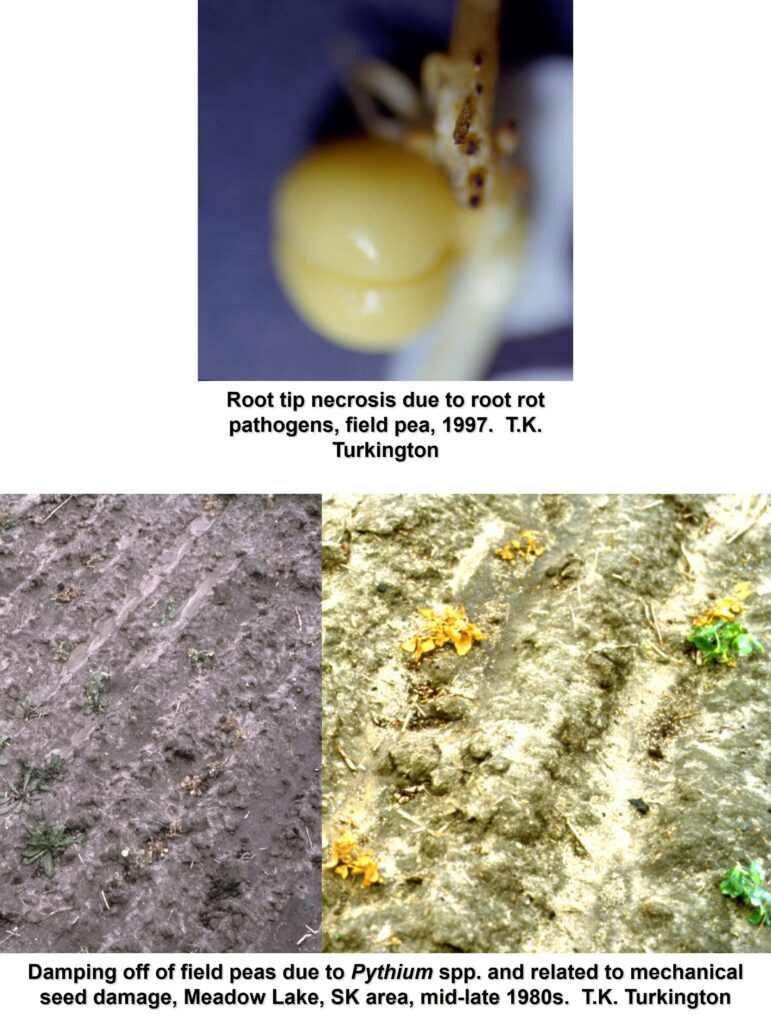
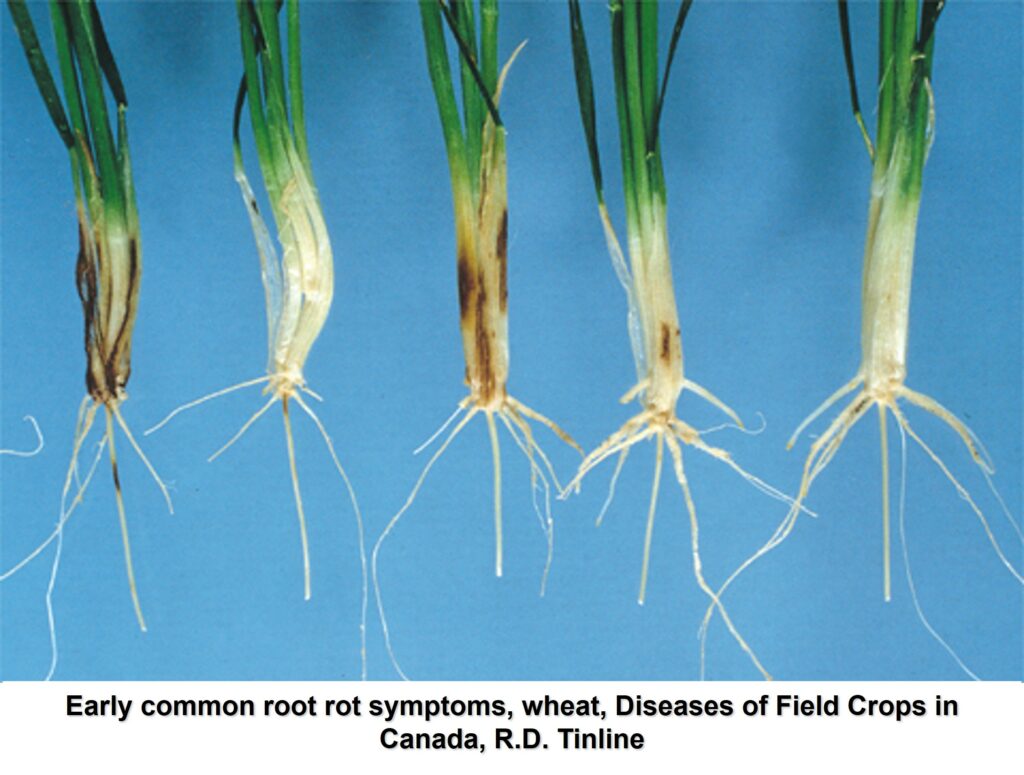
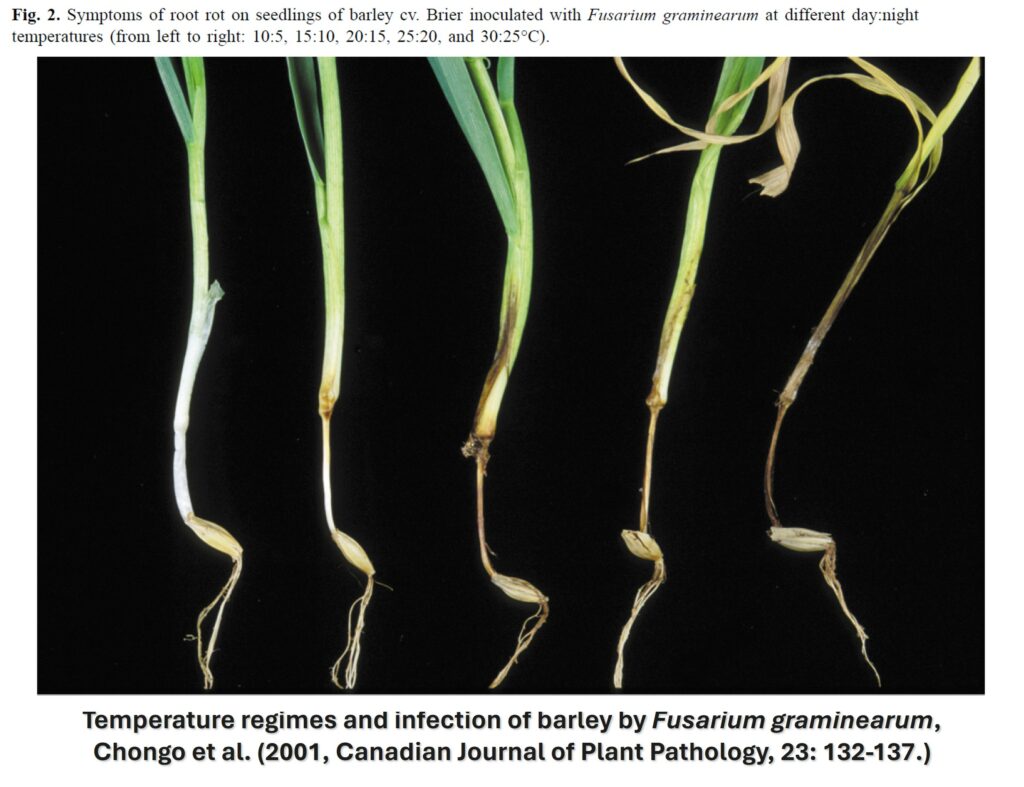
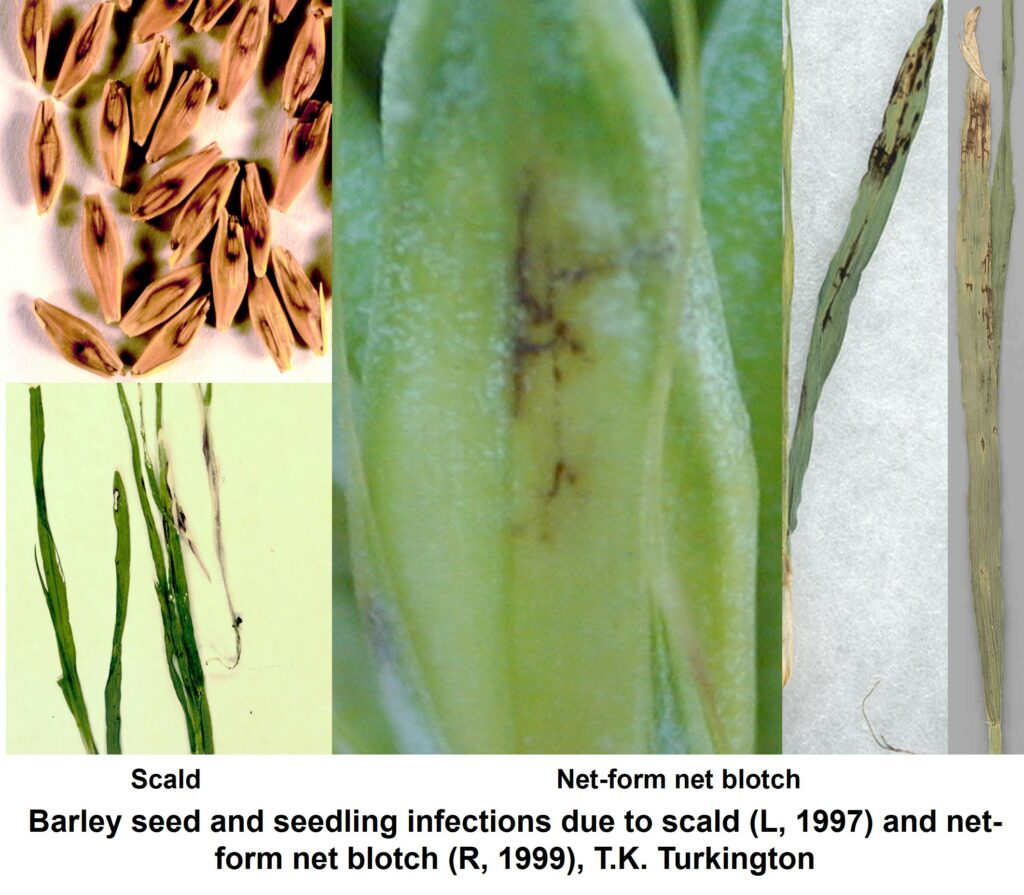


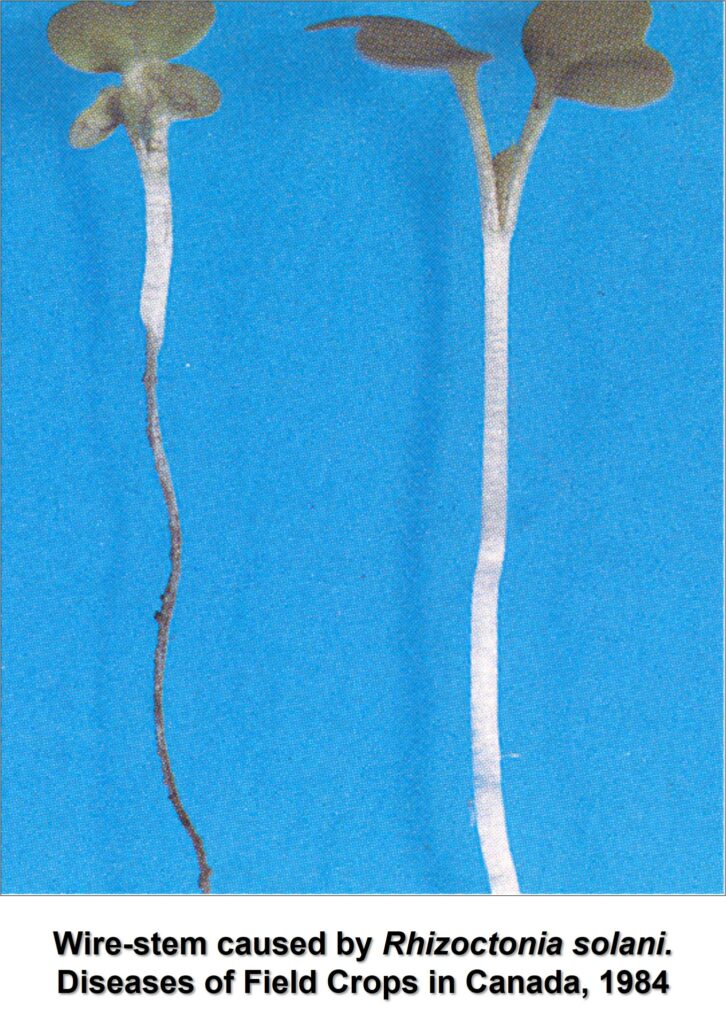
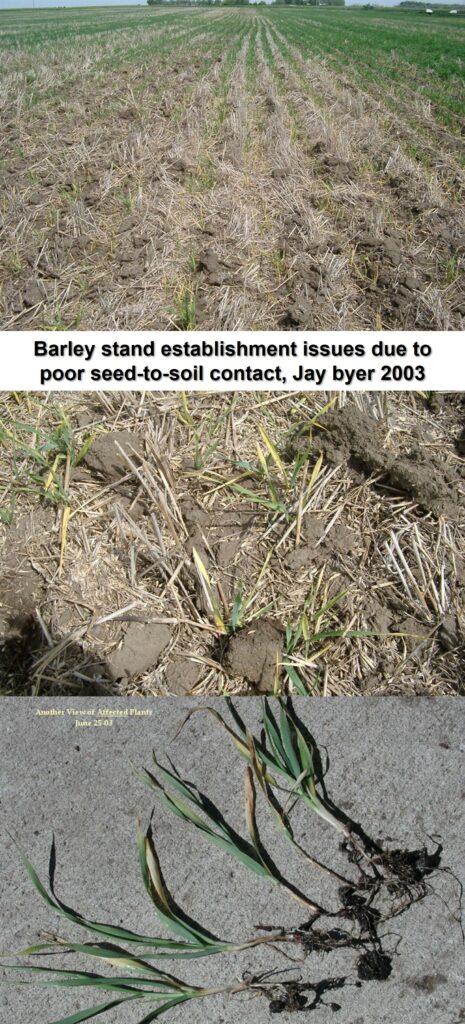
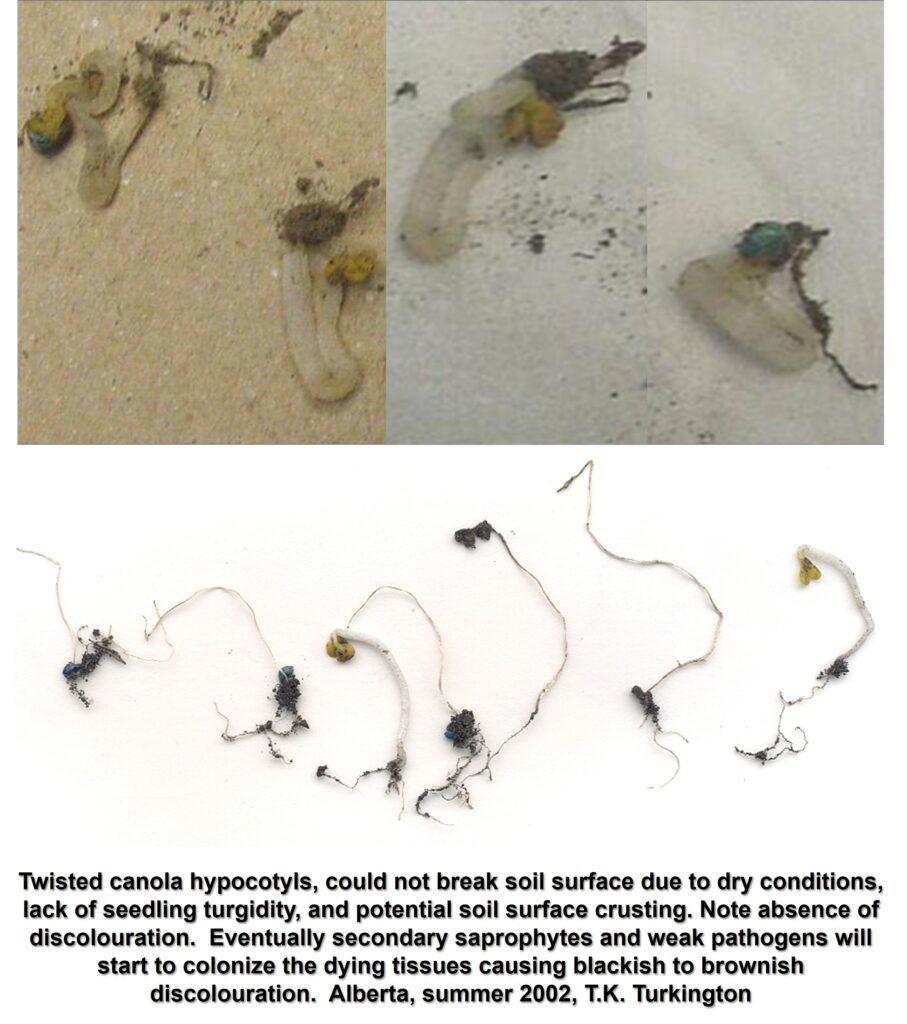
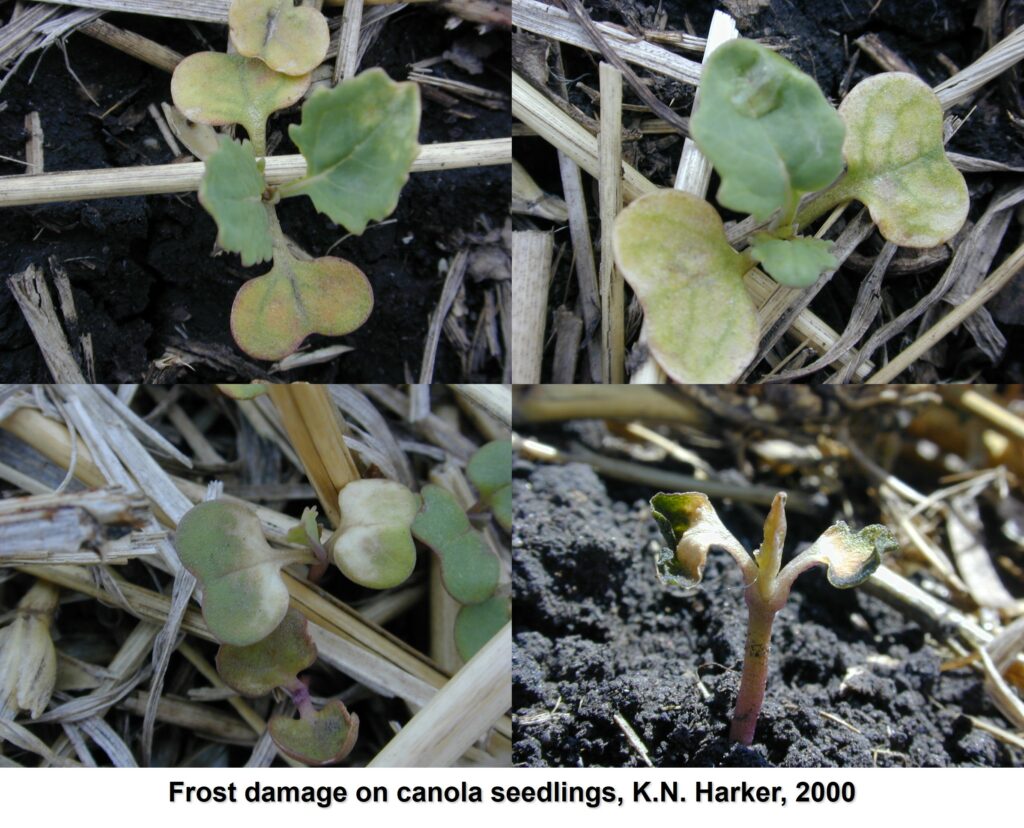
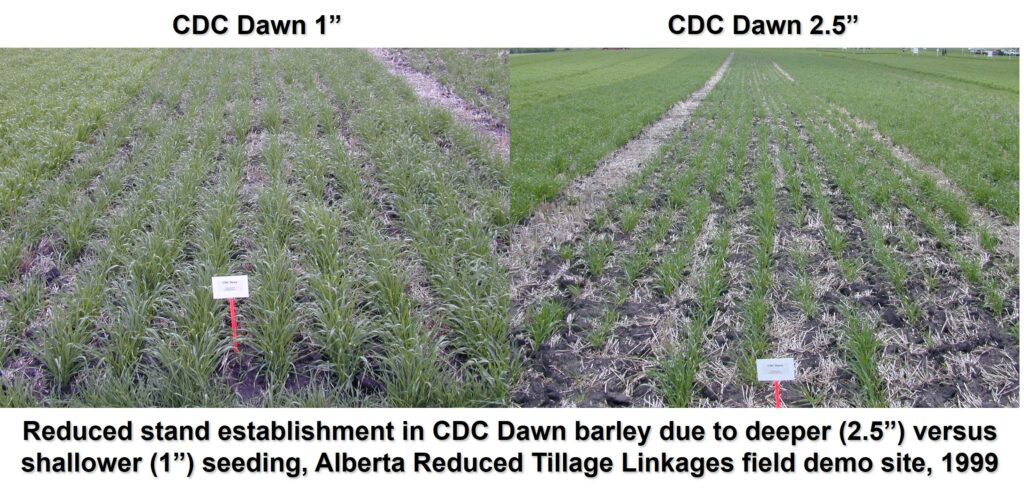
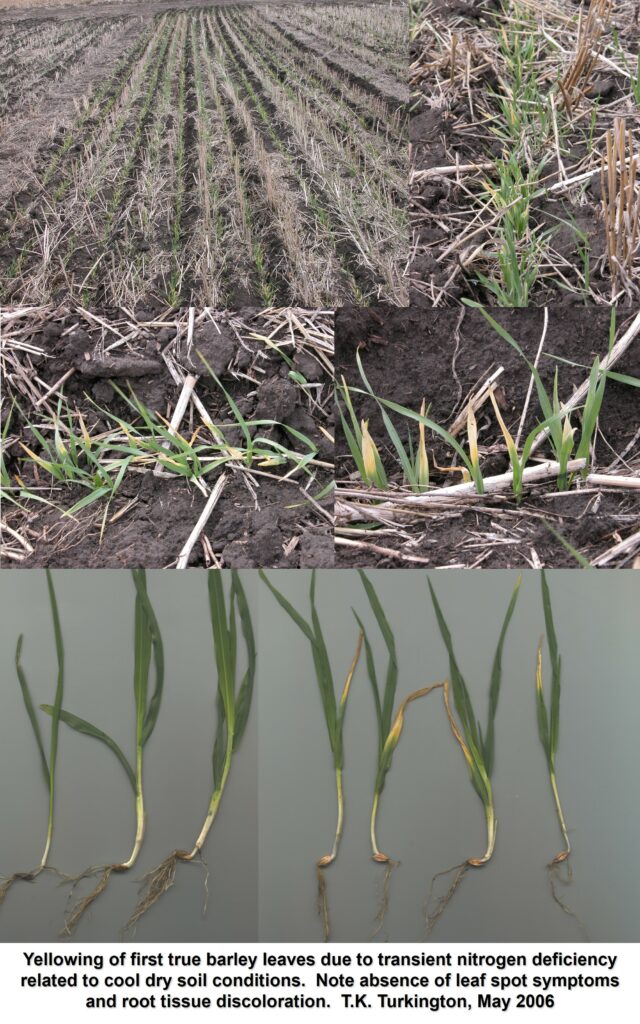

Compiled by T.K. Turkington (AAFC Lacombe), Mike Harding (AAI Brooks), Alireza Akhavan (Sask. Ag.), David Kaminski (Manitoba Ag.), Syama Chatterton (AAFC Lethbridge), Michelle Hubbard (AAFC Swift Current), and Sabine Banniza (U of Saskatchewan).

